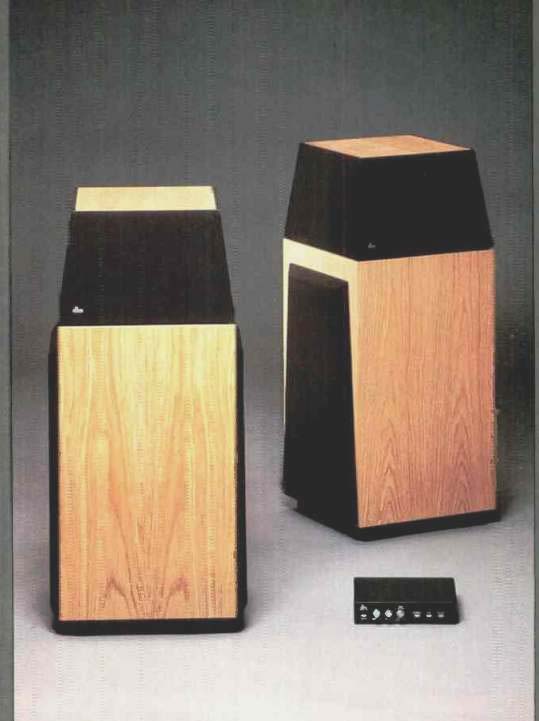
Manufacturer's Specifications:
Loudspeaker System Type: Three-way, eight-driver, equalized.
Drivers: Two 10-in. (25-cm) acoustic suspension woofers; two 41/2-in. (11 cm) midranges; four 1/4-in. (1.3-cm) dome tweeters.
Crossover: Approximately 450 Hz and 3,150 Hz, depending on driver.
Frequency Response: 30 Hz to 20 kHz, ±2.5 dB (with controller/equalizer). Sensitivity: 90 dB SPL at 1 meter for 2.83 V, mid-band, typical room.
Nominal Impedance: 4 ohms.
Recommended Amplifier Power: 40 to 300 watts.
Dimensions: 16 in. W x 14 1/2 in. D x 344 in. H (41 cm x 37 cm x 88 cm).
Weight: 65 lbs. (30 kg).
Controller Distortion: 0.05% THD or IM.
Maximum Input: 2.5 V, nominal; 0.5 V, 20 Hz to 20 kHz.
S/N Ratio: 88 dBA, re: 1 V.
Input Impedance: 212 kilohms.
Output Impedance: 330 ohms.
Price: $1,399 per pair, with controller.
Company Address: 71 Chapel St., Newton, Mass. 02195.
Creation of a sound field that provides a measure of stereo imaging for everyone in the listening room is the goal of dbx loudspeaker systems. Former dbx engineer Dr. Mark Davis pointed out, in a 1984 white paper, that unequal propagation delays from two speakers to an off-center listener cause a collapse of the sound stage into the location of the nearer speaker. Davis experimentally derived a radiation pattern that would compensate for these sound-image shifts by making the far speaker louder than the near one.
The question is, could dbx devise a system that would let us listen anywhere without sacrificing imaging fidelity usually found only at the "sweet spot" ? dbx is best known to the hi-fi enthusiast for their noise reduction systems, dynamic range expanders, and other signal processors. For the professional audio world they also manufacture noise-reduction systems, a processor for (non-PCM) digital audio recording, and a line of signal processors such as equalizers and compressor/limiters.
They also developed the noise-reduction portion of the MTS television stereo system. These are impressive credentials in the areas of psychoacoustics and engineering. It is natural that this talent would be applied to the development of a high-fidelity speaker system, the most difficult of all challenges in psychoacoustics.
The first speaker from dbx, the Soundfield One, was announced in the spring of 1984 at a price of $2,500. The Soundfield Ten followed about a year later at a much lower price and was so well received that the original One (now the 1A) was substantially redesigned to keep it on top. Even lower priced models, the 100 and the 1000, have recently been introduced.
The Ten is a squat but attractive floor-standing speaker. Its oak-veneer cabinet (also available in walnut) is fitted with brown knit grille assemblies on two opposite sides and the top. As normally deployed, the wood panels without the grilles face the listening area. A label on each speaker indicates the proper orientation toward the other speaker. Other placement recommendations are that the pair be widely spaced but kept a foot or more from side walls.
The driver complement for each speaker consists of a 10 inch woofer and 4 1/2-inch midrange on each side panel and an array of four 1/2-inch dome tweeters. The tweeters are mounted on top, in a molded particleboard structure which aims them in all four directions and slightly upward. The tweeter facing the other speaker looks different from, and plays louder than, the other three. The grille cap, which covers the tweeter array, has a solid top and a substantial wood frame. Like the beacon of a lighthouse, the tweeters are in a little room, looking out the "windows." An elaborate crossover network inside the cabinet determines not only the crossover points but the amplitude and phase relationships between and among the drivers which produce the egg-shaped horizontal radiation pattern required by Mark Davis' studies. The complex task of determining the crossover's component values was handled by a computer simulation. Figure 1 shows a printout, from dbx's computer, of the signal amplitudes feeding each driver in the Ten.
Passive crossovers are commonly designed to equalize a speaker's overall response, in addition to their primary function of dividing the signal into lows, mids, and highs. The Ten's passive crossover is complex enough, so spectral balance is equalized by a small "controller" patched into the preamp's tape loop or between preamp and power amp.
Three rotary controls and a pushbutton on the controller modify a hefty baseline equalization of nearly ± 10 dB over the audio range. The high-frequency control provides a gentle up or down tilt for the entire spectrum. The low frequency control boosts or cuts only the extreme low end.
The "Wall EQ" button introduces a ripple in the response to compensate for the one produced acoustically when the speakers must be used very close to the wall behind them.
An "Ambience" control is intended to either tighten or open up the stereo image. It works by blending in midrange signals from the opposite channel, either in phase or out of phase. Each of these unusual control functions is a welcome addition to the normal preamp controls which work best as program equalizers. The dbx controller can be thought of as providing optimal speaker/room interface compensation.
Measurements
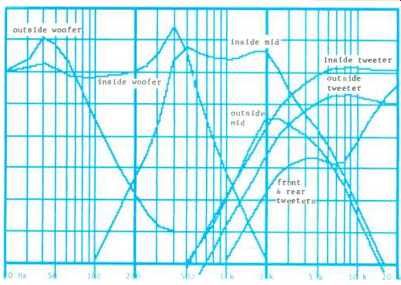
Fig. 1--dbx computer simulation printout of amplitudes of the signals fed
by the crossover to each of the Soundfield Ten's eight drivers.
The controller was measured electronically, the way any other signal processor might be. The frequency amplitude response with high- and low-frequency controls set to normal, maximum, and minimum is shown in Fig. 2. Measurements of crosstalk (the inverse of channel separation) show the effect of the "Ambience" control. These are plotted in Fig. 3 for maximum increased ambience and in Fig. 4 for maximum decreased ambience. With this control in its de tented center position, separation was 30 dB from 20 Hz to 20 kHz-certainly adequate, but far from the 80 dB often demanded of CD players. Figure 5 shows the effect of engaging the "Wall EQ" button.
Such a controller should be designed to accept the full maximum output voltage of a CD player (around 2 V) at its input. It should, in theory, also be able to provide 2.5 V of output to drive powerful amplifiers to their maximum output.
The dbx controller falls slightly short of both goals in some EQ areas. Perhaps this is not a probable situation, given music's normal spectral distribution, but it would be comforting to have some headroom. It could occur, however, when the controller is used to directly feed a power amplifier with gain controls; they must be run wide open to avoid clipping in the controller.
Speaker impedance magnitude versus frequency is plotted in Fig. 6, and complex impedance is shown in Fig. 7.
The 4-ohm average and the dip to just above 2 ohms at 450 Hz make this a difficult load to drive. You can expect a "lightweight" amplifier to "thermal out" when playing compressed material at high volumes for long periods. Use an amp rated for low-impedance loads and you will have no problem.

Fig. 2--Controller frequency response with high- and low-frequency controls
set to normal, maximum, and minimum.
Fig. 3--Controller crosstalk with "Ambience" control set for maximum increase ("+"). Antiphase signal from the opposite channel enhances spaciousness.Top curve shows left channel output with signal fed to left input; bottom curve shows same output with signal fed to right output.

Fig. 4--Controller crosstalk with "Ambience" control set for maximum
decrease (" "). In-phase signal from the opposite channel decreases
spaciousness. Note that separation decreases most at mid-frequencies.
Fig. 5--Effect of controller "Wall EQ" setting allows the speaker to be placed against the wall behind it. See text.
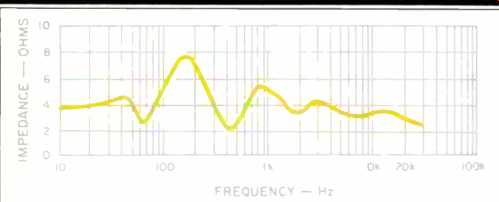
Fig. 6--Impedance.
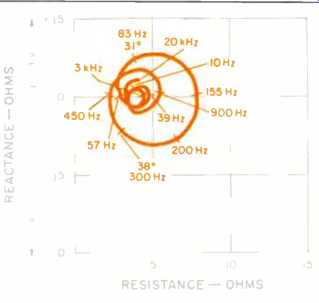
Fig. 7--Complex impedance. Note relatively small phase angles.
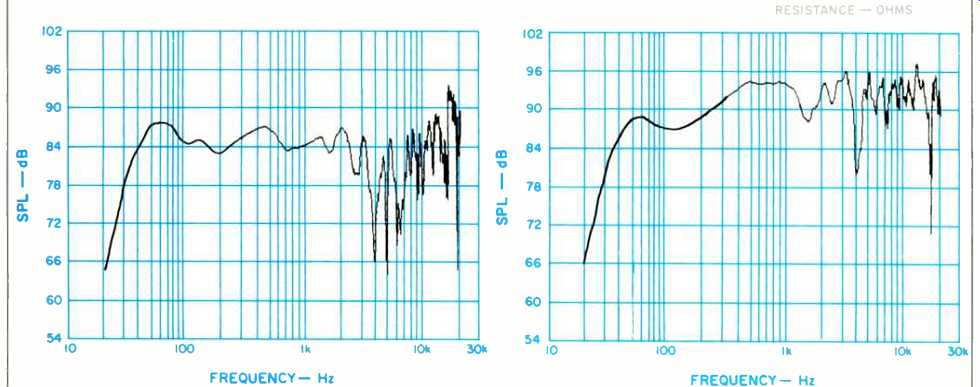
Fig. 8--Anechoic frequency response, 1 meter from panel facing the listener.
Note irregularities due to multiple drivers and tweeter cover.
Fig. 9--Anechoic frequency response, 1 meter from axis of maximum output, showing irregularities similar to Fig. 8, and greater output.
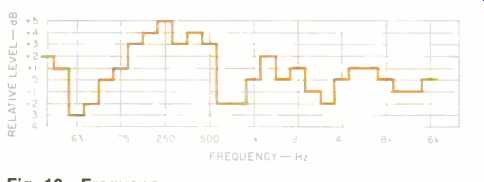
Fig. 10--Frequency response measured to dbx specifications: 1/4-octave analysis,
two speakers in a room, using pink noise and optimal adjustment of the controller.
dbx believes that narrow-band measurements are less informative.
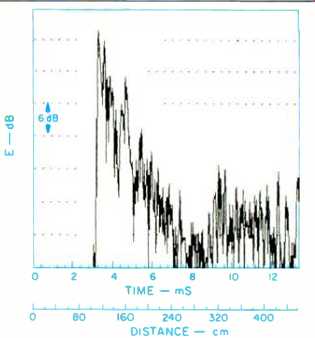
Fig. 11--One-meter energy-time response. Multiple arrivals are responsible
for the irregularities.
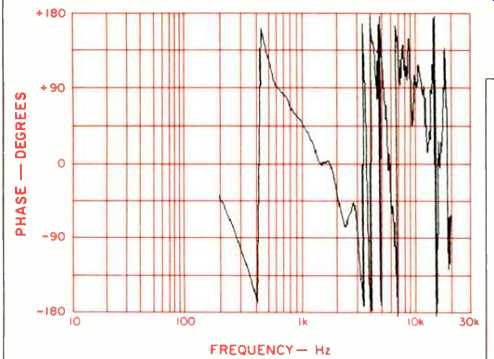
Fig. 12--System phase response at 1 meter. See text.
All of the remaining data on the Ten was taken as a controller/amplifier/speaker system. I used 1 kHz as a reference frequency to set power input to 1 watt for response tests, but the amplifier power at other frequencies was determined by the amount of equalization.
Anechoic frequency response, plotted in Fig. 8, is measured at a distance of 1 meter from the center of the "front" panel. This is the panel facing the listener, but it is not either of the two panels that contain a woofer and midrange. The "maximum" radiation panel is the one facing sideways, towards the other speaker. Figure 9 shows the response on the axis of the maximum panel. The roughness is due to the interaction of the multiple drivers and to the reflections from the tweeter cover; dbx, and others, feel that this roughness is not heard as such and therefore is unimportant compared to the smoothness of the average. In any case, dbx could not achieve their desired radiation pattern without multiple drivers, so the roughness inherent in this type of measurement is inevitable.
It is quite clear from dbx's literature that these speakers are designed for performance as a stereo pair in a living room. Of all the measurements I regularly make on speakers, only the 3-meter room response plot includes the effect of the listening room. The dbx Ten's frequency response specification is 30 Hz to 20 kHz, ±2.5 dB, for a stereo pair fed with uncorrelated pink noise and analyzed with a 1/3-octave frequency bandwidth. This is a traditional and well-regarded technique for measuring control-room monitors and sound reinforcement systems, though much detail is lost.
Figure 10 is a plot of the 1/3-octave analysis performed in this manner, with the controller adjusted for flattest response. The measured result is excellent, but exhibits the low-frequency variations I expect from any speaker in any room. More relevant to me is that the sound of the pink noise in the room was smooth and even, with no swishing or "phasing" noises audible as I moved around. Also interesting is that while most good-sounding speakers exhibit some high-frequency roll-off in this measurement, the Tens sounded fine, with a measured flat response. Perhaps this is a result of the diffuse sound produced by their multi-directional radiation pattern.
The cause of the irregular anechoic frequency response is evident in the 1-meter energy-time response, shown in Fig. 11. The arrival-time spread is shown for the front radiation direction. The multiple arrivals combine in a complex and frequency-dependent manner to produce additions and cancellations which are seen as roughness in the frequency response. The smooth decay of these arrivals and reflections resembles what you would get in a tiny room.
The 1-meter phase response for the front radiation direction is plotted in Fig. 12. It is erratic, like the frequency response, and for the same reasons. The time offset of the analyzer is set to exactly match the time it takes the sound to travel from the front-firing tweeter to the microphone. This setting is also accurate at lower frequencies for the midrange and woofer. Between 3 and 15 kHz, however, the range of this phase plot cannot accommodate the extreme and rapid phase shifts caused by an interaction of delayed sounds from other tweeters and internal reflections.
The 3-meter room response, plotted in Fig. 13, shows that the Ten interacts strongly with the room, as we should expect from its multi-directional radiation pattern. Figure 14 is the room response measured 30° off axis towards the maximum radiation panel. Together, these curves show the increase in off-axis output that dbx intended. Note also that the effect of the inevitable room reflections is much like that of the multiple drivers and cabinet reflections in the anechoic plots, except that the irregularities introduced in the response are greater.
Wide directivity in the extreme is shown in the "three-dimensional" horizontal response plot of Fig. 15. The plot comprises 31 individual frequency response curves from 200 Hz to 20 kHz, taken every 6° from the front, around the side, to the rear of the cabinet. Note the increased output at 90°, the direction of maximum radiation.
Directivity is also shown for the vertical direction, in Fig. 16. The measurements start at the front, go across the top, and end at the rear of the speaker. High-frequency output is seen to be very great, except for straight up, because the solid top of the tweeter cover blocks this radiation. Both plots again show the dense frequency response structure resulting from multiple drivers and cabinet reflections.
Woofer nonlinearity was tested by observing harmonics of sine waves applied at 41.2, 110, and 440 Hz (musical notes E1, A2, and A4) in Figs. 17, 18, and 19, respectively. Distortion of 41.2 Hz at high power levels is high, and one should consider how much the equalizer is boosting this frequency relative to mid-band levels. The 110- and 440-Hz measurements reveal much less distortion, but it is rising quickly at the highest power amplitudes used, 100 and 80 watts, respectively.
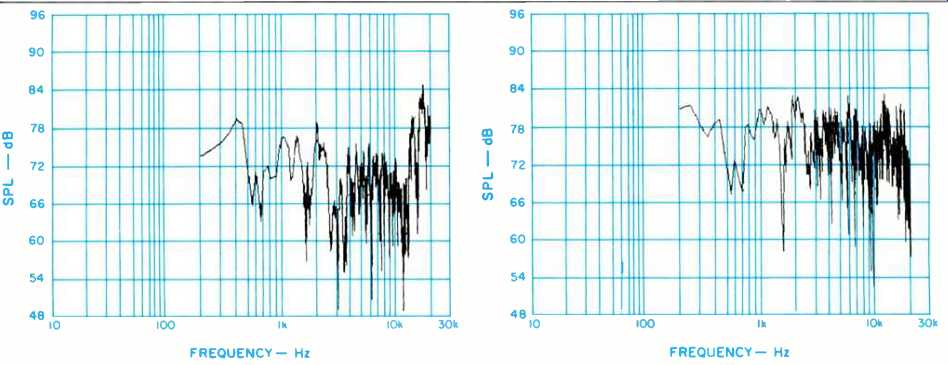
Fig. 13--Three-meter room response, on front axis. Normal room reflections
produce irregularities greater than those caused by interference and reflection
within the cabinet.
Fig. 14-Three-meter room response, 30° off axis towards maximum output panel of one speaker.
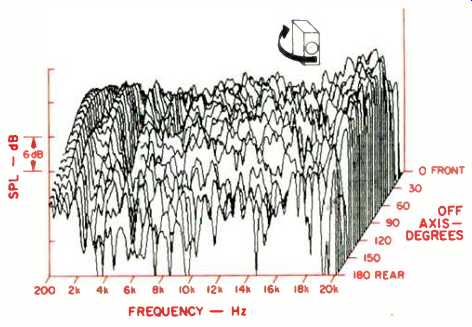
Fig. 15--Horizontal off axis frequency response from front to rear of speaker.
Note wide directivity and maximum output at 90°.
Modulation of a midrange tone (440 Hz) by a bass tone (41.2 Hz) reveals additional nonlinearities in the woofer. Intermodulation of these pure tones, which are mixed in a 1-to-1 ratio before being fed to the controller, is plotted in Fig. 20. The equalization in the controller changes the balance of power such that 10 times the electrical power is applied to the speaker at 41.2 Hz as at 440 Hz. The acoustical output is, however, approximately 1 to 1. Measured performance indicates 10% distortion, an objectionable amount, being exceeded when more than 20 watts is applied.
Power linearity is a measure of change in frequency response as power to the speaker is increased. A deviation from a straight line indicates that the speaker is in trouble.
The tests are fairly quick, taking only a few seconds to cover the entire audio band. Compression seen in these tests is, therefore, usually due to severe distortion rather than to more benign heating effects which can reduce SPL without waveform distortion.
The response equalization in the Ten's controller makes the power linearity test tricky. The 1-kHz reference frequency is very near the frequency of maximum sensitivity of the speaker and is therefore one of minimal controller boost (actually 10 dB of attenuation). Referring to Fig. 2, and remembering that a 10-dB change is a 10-to-1 power ratio, a signal amplitude requiring 1 watt of input at 1 kHz can be seen to require nearly 100 watts at 20 kHz (20 dB more). Maybe we can give the four 1/2-inch tweeters a brief exposure to 100 watts in this test, but we certainly can't go up from there.
I decided to use 0.1 watt at 1 kHz as a reference and limit low-frequency power to 200 watts. High-frequency power is limited to 100 watts. The result is shown in Fig. 21. The self-imposed power limits do not stress the frequency extremes the way certain Compact Disc "sonic spectaculars" might, but within these limits the Ten shows respectable linearity.
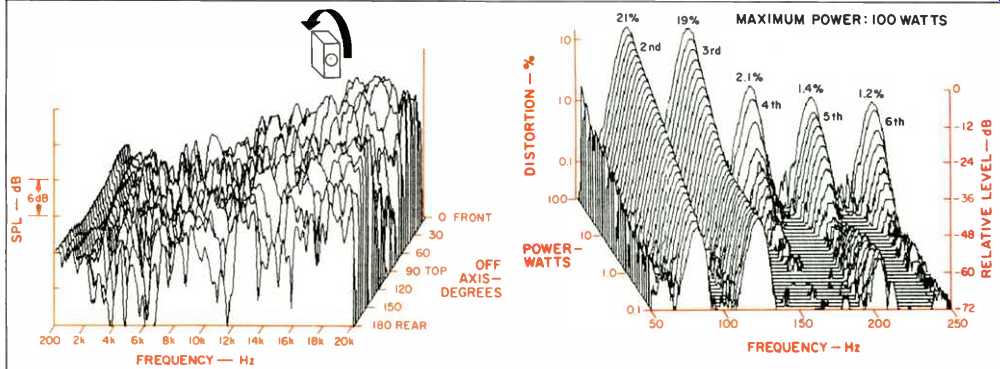
Fig. 16-Vertical off-axis frequency response from front, over top, to rear
of speaker. Note wide directivity and the blocking effect of the tweeter
cover.
Fig. 17-Harmonic distortion for the musical tone E1 (41.2 Hz).
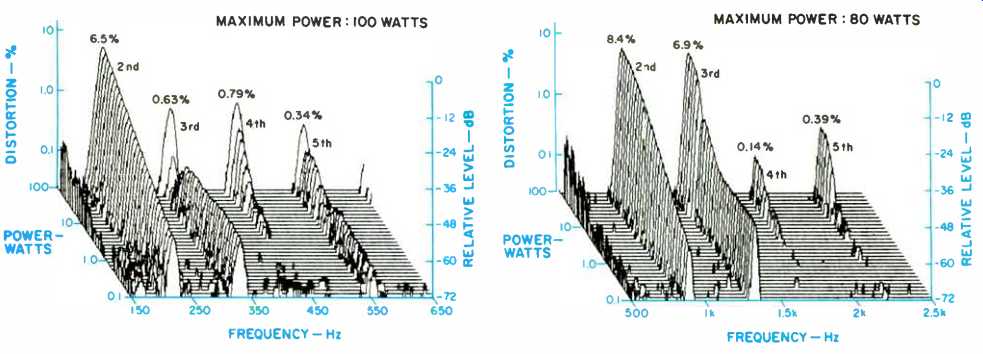
Fig. 18-Harmonic distortion for the musical tone A2 (110 Hz).
Fig. 19-Harmonic distortion for the musical tone A4 (440 Hz).
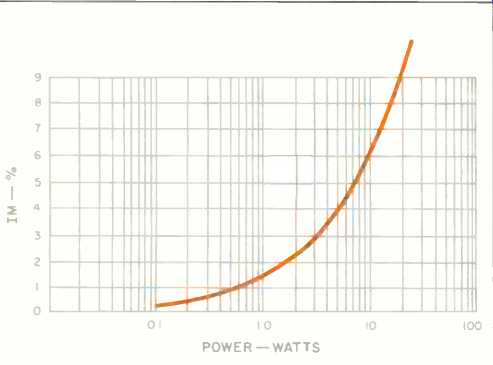
Fig. 20-IM distortion on A4 (440 Hz) produced by E1 (41.2 Hz) when mixed
1 to 1, before being fed to the controller's equalization. Above 20 watts,
10% distortion is exceeded and is audible.
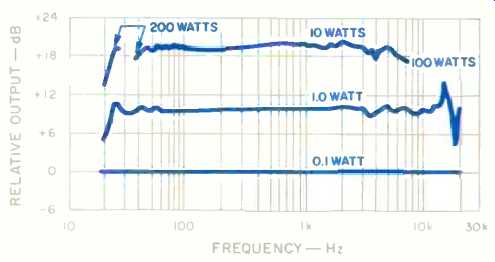
Fig. 21--Power linearity. Curves show change in frequency response at increased
power inputs relative to response of 0.1 watt at 1 kHz. Results include
effect of controller equalization.
Use and Listening Tests
I must admit that I got off to a bad start with the Tens.
When first making connections to the high-quality five-way binding posts, I found that they were all loose. Furthermore, the terminals on the wires that connect to the binding posts physically prevented me from getting an effective tool on the nuts to tighten them. When secure connections were finally made, I heard a buzzing from one of the woofers. On investigation, I found that a ferrite inductor core from a crossover coil had broken loose and become lodged between the cone and the frame. It was but a minor chore to fix these problems, but I can imagine the frustration this would be to a new owner. My best advice is to buy from a competent dealer, even though I don't believe this will happen very often.
My listening room is well suited to exploiting the psycho acoustically derived radiation pattern of the Tens. It is rather live or reflective, and the walls behind the speakers and to their sides are free of obstacles, such as furniture or doorways, which could absorb or reflect the sound in an uncontrolled fashion. At 18 feet, the room's width allows a generous distance between speakers without forcing them too close to the side walls. I placed the speakers 3 feet out from the wall behind them and 8 feet apart, with their axes of maximum radiation aimed straight at each other, as dbx recommends. Equalizer controls were initially set to the "flat" or "normal" positions.
Recordings of large orchestras, such as the Telarc CD of the Berlioz "Requiem," were presented with a majestic spaciousness within which individual sections or soloists were clearly heard and accurately placed. While the most defined and stable image locations were heard on the center line between the two speakers, dbx's goal of acceptable stereo over a wide range of listener positions was achieved to a remarkable degree. Bass was powerful, requiring a slight reduction at the controller, and mids were, if anything, overly smooth and free of glare. The high end was strong and extended, making me expect more definition than I heard. In sum, the rendition of large-scale performances in reverberant spaces was accurate and warmly musical.
The Tens did not fare so well on more dryly recorded music where immediacy and sharp transient attacks are called for. One such recording is a Sheffield CD, I've Got the Music in Me, featuring singer Thelma Houston. A friend, expecting the usual hot, up-front vocal sound, exclaimed that it sounded like Thelma was singing from behind a sofa.
To me, it sounded as if her voice had been modified by the studio technique called "vocal doubling," in which a delayed signal is mixed with the original to give a "fatter" or "gutsier" effect. Percussive sounds from the Sheffield CD Drum Record were reproduced with a too-distant perspective and softened attacks.
The dbx Ten's manual has advice for dealing with too much spaciousness. The first suggestion is to turn the "Ambience" control toward minimum. No setting was found to improve Thelma's centered voice very much, but a strong effect was noted on non-centered instruments and on spaciousness. For me, the minimum end was more mono sounding, but did not solve the problem. The maximum rotation gave a "phasey" sound which I found annoying. I simply left it centered. The "If all else fails ..." instruction for drying out the sound worked great. The manual suggests rotating each speaker slightly so the axis of major radiation begins to face into the room instead of at the other speaker.
This action seems to me to be a partial abandonment of the "Soundfield" concept in favor of conventional front-directed radiation. A full 45° rotation of the maximum output axis towards the listening area sounded best to me. With this rotation, you have to sit more or less in front, as with "cross fired" conventional speakers. Also, a gentle treble roll-off, obtained from the controller, now seemed appropriate.
With these changes, the Tens began to sound very conventional-and very good on all music. It became apparent that this is a well-designed three-way system having excellent blending of driver responses and directivities. The five drivers aiming away from the listening area lend a sense of air and transparency, with only a slight effect on immediacy and definition.
Two special applications for the Tens come to mind. The first is stereo sound for video. The major problem with integrating picture and sound is that the off-center viewer/ listener hears the dialog as coming from the nearest speaker, while the picture is still in the center. The Tens will eliminate this discrepancy; the dialog will stay centered while the music and effects span a wide sound stage. The second application is for background music in a courtyard or atrium, such as at an art exhibition. The Tens could be placed near the center and provide an even stereo effect for people on all sides.
The dbx Ten is an adaptable speaker system. It can accommodate a wide variety of discerning tastes in an equally wide range of listening environments. For oddly shaped rooms or when seating flexibility is a necessity, it has little competition. For the audio enthusiast with more conventional needs, the Ten has plenty of competition, but it holds up very well.
-David L. Clark
(Source: Audio magazine, Jan. 1987)
Also see:
Dahlquist M907i Speaker (Aug. 1990)
Celestion SL-600 Loudspeaker (Feb. 1985)
= = = =